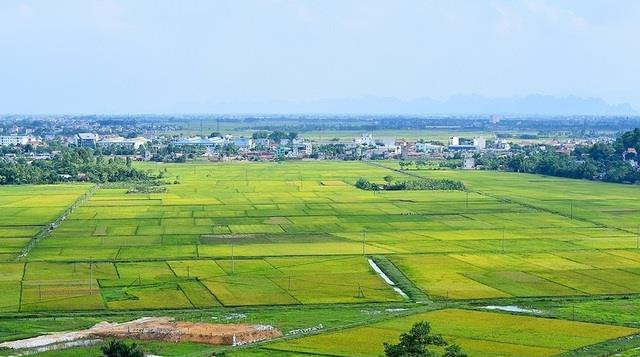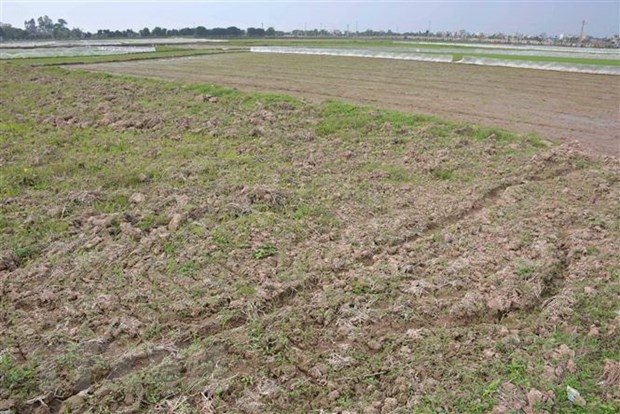Newest criteria for allocating quotas in provincial land use planning to new district-level land use planning in Vietnam
The following article discusses the newest criteria for allocating quotas in provincial land use planning to new district-level land use planning in Vietnam as specified in Decree 102/2024/ND-CP.

Newest criteria for allocating quotas in provincial land use planning to new district-level land use planning in Vietnam (Image from the Internet)
Newest criteria for allocating quotas in provincial land use planning to new district-level land use planning in Vietnam
According to Clause 3, Article 22 of Decree 102/2024/ND-CP, the ariteria for allocating quotas in provincial land use planning to new district-level land use planning in Vietnam include:
- For rice cultivation land and other annual crop land: In addition to the criteria specified at Point a, Clause 2, Article 22 of Decree 102/2024/ND-CP, it is also determined based on the orientation for land use in the provincial planning; land use demand, and the ability to shift the agricultural land use structure in line with the socio-economic development situation of each locality;
- For protection forest land, special-use forest land, production forest land, and perennial crop land: In addition to the criteria specified at Point b, Clause 2, Article 22 of Decree 102/2024/ND-CP, it is also determined based on the orientation for land use in the provincial planning; the current status, advantages, potential, and development orientation of perennial crops linked with regional development chains, local advantages; requirements for forest cover ratio;
- For defense land, security land: In addition to the criteria specified at Point c, Clause 2, Article 22 of Decree 102/2024/ND-CP, it is also determined based on the orientation for land use in the provincial planning; the current use status of defense land, security land, land use demand, and the ability to allocate land for defense and security purposes in the locality in line with the approved defense land use planning and security land use planning;
- For concentrated livestock land, it is determined based on the current status, land use changes; results of land use targets in the previous planning cycle; orientation for land use in the provincial planning; livestock development strategy; disease-safe livestock area development project; land use demand for concentrated livestock development;
- For aquaculture land, it is determined based on the current status, land use changes; results of land use targets in the previous planning cycle; orientation for land use in the provincial planning; fishery resource protection and exploitation planning; advantages and potential of land for aquaculture; land use demand for aquaculture;
- For salt production land, it is determined based on the current status, land use changes; results of land use targets in the previous planning cycle; orientation for land use in the provincial planning; salt industry development project; salt production land use demand;
- For rural homestead land and urban homestead land, it is determined based on the national housing development strategy, housing development programs under housing law; current use status of urban and rural homestead land; land use standards; construction standards; homestead land allocation limits; population size forecast, urbanization rate; real estate market development; results of land use targets in the previous planning cycle; orientation for land use in the provincial planning; urban and rural system development orientation in line with the potential and advantages of each locality;
- For office construction land, it is determined based on the current status, land use changes; land use demand, results of land use targets in the previous planning cycle; orientation for land use in the provincial planning; land use standards; sectoral orientation and planning; national technical standards for construction planning, urban planning;
- For land for career construction projects, it is determined based on the current status, land use changes; land use demand, results of land use targets in the previous planning cycle; orientation for land use in the provincial planning; land use standards; sectoral orientation and plans, national technical standards for construction planning;
- For industrial park land, it is determined based on the current status, land use changes, results of land use targets in the previous planning cycle; orientation for land use in the provincial planning; industrial development demand and capability; industrial park occupancy rate as per industrial park law;
- For industrial cluster land, it is determined based on the current status, land use changes; land use demand, results of land use targets in the previous planning cycle; industrial cluster development orientation; orientation for land use in the provincial planning; development demand and capability, industrial cluster occupancy rate;
- For land used for mineral activities, it is determined based on the current status, land use changes; land use demand, results of land use targets in the previous planning cycle; orientation for land use in the provincial planning; mineral strategy and planning; mineral protection, exploration, exploitation, and use plans;
- For commercial land and non-agricultural production establishment land, it is determined based on the current status, land use changes; land use demand, results of land use targets in the previous planning cycle; orientation for land use in the provincial planning; national technical standards for construction planning;
- For public use land, it is determined based on the current status, land use changes; results of land use targets in the previous planning cycle; orientation for land use in the provincial planning; national technical standards for construction planning, construction classification regulations as per sector-specific laws; land use standards as per land law and sector-specific laws;
- For religious land, belief land, cemetery land, funeral homes, cremation facilities, columbarium facilities, it is determined based on the current status, land use changes; results of land use targets in the previous planning cycle; orientation for land use in the provincial planning; land use standards as per land law and sector-specific laws;
- For specialized water surface land and other non-agricultural land, it is determined based on the current status, land use changes; land use demand, results of land use targets in the previous planning cycle; orientation for land use in the provincial planning; legal regulations, standards, and industry norms related to constructions associated with water surface use, civil constructions; exploitation capabilities for aquaculture purposes, hydropower, irrigation works; national defense, security, disaster prevention, and climate change adaptation requirements.
- Key word:
- land use planning
- land use
- land
- Vietnam
- Regulations on the Location for Conducting Audits by State Audit Teams
- Orientation for Regional Forestry Development until 2030
- Provisions on Reviewing and Adjusting Land Use Planning and Plans from August 1, 2024
- Responsibilities of the State Audit Team in Amending the Audit Decision and Audit Plan
- Orientation on the National Forestry Planning until 2030
- General Department of Taxation Requests Completion of Leadership Official Title Standards According to Decree 29/2024
-

- Authority to impose disciplinary actions on public ...
- 11:30, 27/08/2024
-

- Regulations on storage and presentation of data ...
- 11:00, 27/08/2024
-

- Land use regulations for high-tech parks in Vietnam
- 10:30, 27/08/2024
-

- Directive on the implementation of Project of ...
- 10:00, 27/08/2024
-

- Cases permitted for urban renovation in Hanoi ...
- 09:30, 27/08/2024
-

- Regulations on the Location for Conducting Audits ...
- 19:30, 27/08/2024
-

- Orientation for Regional Forestry Development ...
- 19:00, 27/08/2024
-

- Provisions on Reviewing and Adjusting Land Use ...
- 18:00, 27/08/2024
-

- Responsibilities of the State Audit Team in Amending ...
- 17:30, 27/08/2024
-

- Orientation on the National Forestry Planning ...
- 17:00, 27/08/2024

 Article table of contents
Article table of contents
